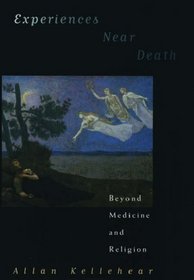Search -
Experiences Near Death: Beyond Medicine and Religion
Experiences Near Death Beyond Medicine and Religion
Author:
A person is seriously ill or involved in an accident and their heart stops beating; for a brief time they are clinically "dead." Once revived, the victim has a remarkable tale to relate: typical narratives include feelings of great peace, out-of-body travel, tunnel sensations, life review, and bright lights. These phenomena, often referred to as... more »
Author:
A person is seriously ill or involved in an accident and their heart stops beating; for a brief time they are clinically "dead." Once revived, the victim has a remarkable tale to relate: typical narratives include feelings of great peace, out-of-body travel, tunnel sensations, life review, and bright lights. These phenomena, often referred to as... more »
ISBN-13: 9780195091946
ISBN-10: 0195091949
Publication Date: 1/4/1996
Pages: 230
Rating: ?
ISBN-10: 0195091949
Publication Date: 1/4/1996
Pages: 230
Rating: ?
0 stars, based on 0 rating
Publisher: Oxford University Press
Book Type: Hardcover
Members Wishing: 0
Reviews: Amazon | Write a Review
Book Type: Hardcover
Members Wishing: 0
Reviews: Amazon | Write a Review
Genres:
- Religion & Spirituality >> Occult & Paranormal >> Parapsychology
- Religion & Spirituality >> Occult & Paranormal >> Near-Death Experiences
- Nonfiction >> Social Sciences >> Sociology >> General




